Motorcycles are an exciting mode of travel; however, they are not always comfortable, and, at times, many motorcycle enthusiasts give up riding or never try it because of an improper fit, rider fatigue, or stiff ergonomics. While sophisticated suspension systems can help improve the comfort and riding experience, they either come in the form of heftier motorcycle prices or expensive modifications. If you research the entire motorcycle lineup collection of a particular year, you will observe that bikes featuring the best suspension setups with both front and rear adjustments tend to be the most expensive and out of budget.
In addition, some motorcycles are designed for tall riders while others are designed for average or short riders, but the aesthetics, engine configuration, and tech features often compel us to buy those motorcycles and later regret them because of uncomfortable ergonomics and poor riding stance. Unfortunately, dealerships are not always cooperative when it comes to test rides or finding tailored ergonomic configurations. Though video reviews of different motorcycles have helped riders determine how a certain bike would fit them, especially when they see people of different heights, body weights, and leg lengths get on different bikes and discuss how they fit, there is still much room for error.
On the other hand, even if the bike fits somewhat, many riders find the ergonomics a bit uncomfortable or challenging for their riding skills. While trying to adapt to the bike’s ergonomics, they compromise their safety and well-being. Uncomfortable or stiff ergonomics put unnecessary strain on your spine (lumbar), shoulders, neck, and legs, leading to different musculoskeletal issues, such as chronic pain in wrists, lower back, sciatic pain, neck strain, and cramps, and other similar issues. With the growing concern among riders regarding their safety and health and the role of proper motorcycle ergonomics in ensuring a pain-free ride, many motorcycle brands have started offering personalized ergonomics, of which Kawasaki
is a great example. Not only has the brand introduced ergo-fit custom parts but also offers ergo-fit technology for all its motorcycles.
The Kawasaki Ergo-Fit® is an interface designed to help riders find their ideal fit based on their physical dimensions and riding style. This system makes it possible to adjust the position of different chassis points, such as seat, footpeg, and handlebars, using parts that are adjustable or interchangeable, ensuring a wide range of riders can enjoy absolute control and comfort on their Kawasaki motorcycles. But what about those motorcyclists who are Kawasaki loyalists and their preferred brands lack the ergo-fit technology? They can use a motorcycle ergonomic stimulator that although is not as advanced as the Kawasaki ergo-fit interface still helps riders tailor the ergonomics of their bike or choose one that already has the right ergonomics for their riding style and needs. This article will delve deeper into the importance of ideal motorcycle ergonomics, what are the repercussions of riding an ill-fit motorcycle, and how a motorcycle ergonomic simulator provides a reliable solution to this perpetual problem.
Table of Content
1. Why Adjust Motorcycle Ergonomics?
A motorcycle’s ergonomics are just as important as its engine or braking system because they have a drastic effect on the rider’s performance, control, and safety. The following ergonomic factors must be considered at the time of motorcycle design, manufacture, or modification to ensure maximum riding comfort:
- How a rider sits on the bike or his riding position.
- A rider’s body dimensions.
- Weight distribution and pressure.
- Motorcycle seat quality and whether it can support the rider’s style.
- A motorcycle enthusiast’s riding skills and experience.
- How long a rider usually rides and the posture he maintains for most of the ride.
All of these ergonomic factors hold significant importance because they directly impact the motorcycle’s comfort, a rider’s experience, safety, control, and handling. Poor ergonomics lead to pain and fatigue that can both decrease focus and concentration, leading to accidents.
Also Read: Why is the Motorcycle Seat Height Important?
2. Pains and Aches Associated with Poor Motorcycle Ergonomics
Motorcycle riding is quite demanding, considering you are exposed to wind and resistive forces trying to counter your forward momentum, leaving you in pain after a few hours on the motorcycle. Though windshields and fairing can help you with aerodynamics and air drag, proper ergonomics can still exacerbate the situation for the rider, causing fatigue and discomfort. Riders who already have problems, with their incorrect fit and riding stance on the motorcycle can be even more vulnerable to different body aches. The most common health issues associated with motorcycle riding, particularly improper ergonomics include:
- Back or Lumbar Pain
- Neck and Shoulder Pain (Cervical and Thoracic Pain)
- Knee Pain
2.1 Cervicals (Neck Pain)
The most common cause of cervicals in motorcyclists is their heavy helmets and habit of keeping their heads static for longer periods. Wind buffeting and pressure on the helmet can put additional strain on the neck and shoulder region causing fatigue to set in quickly. Furthermore, a rider who uses a backpack to safely carry his belongings on the bike just causes more pain unknowingly. You might have already known these pain-inducing factors, but handlebar position, length, and distance from the seat can also put a strain on the cervical/thoracic region. Therefore, if you feel that a lightweight helmet, luggage rack -mounted luggage bags , windshield, and fairing combination are not helping the pain, consider getting the handlebar position, pulling the handlebars backward, or raising them slightly. Based on your individualistic body dimensions, you can also consider other adjustments that help relieve the tension in your muscles.
A few simple neck stretches and moving your head from time to time can also prevent aches and pain in the neck region. During long-distance travels, perform stretching exercises and practice deep breathing to prevent the muscles from going stiff.
2.2 Knee Pain

Knee pain is another common problem that riders suffer, especially after riding continuously for hours or if they use the motorcycle for everyday commutes. Knee pain in motorcyclists is directly associated with seat height, knee angle when sitting on the motorcycle, and the footpeg position to the handlebar and seat. While these measurements can be adjusted through close estimations provided by a motorcycle ergonomic stimulator, the major problem arises while cornering.
To improve your cornering, it is important to determine how far away from the engine you position yourself. Sitting too far from the fuel tank or the engine can put additional stress on your knees, especially when cornering. In addition, if you sit farther off your seat, try sitting a little forward on it to better reach the fuel tank to grip it with your knees. Taking advanced riding classes to practice the right position for cornering can also help with this issue.
2.3 Lumbar Pain

Lower back or lumbar pain starts when you sit too long on a flat and hard motorcycle seat. Finding a well-cushioned gel seat can improve your condition significantly. In addition to custom seat replacements, riders need to improve/adjust their motorcycle’s ergonomic configuration, especially the suspension system and seat position, to reduce strain experienced by their lower back muscles. If possible, try to perform light stretching exercises right after a ride to improve blood flow to the muscles and reduce stiffness. During long interstate trips, take additional breaks just to perform a few back-stretching exercises. The side stretch is the easiest back stretch to perform while still on the road. Additionally, when on a long route, try to slow down your motorcycle from time to time to readjust and correct your riding posture.
3. The Best Way to Improve Ergonomics of an Old Motorcycle

Suppose you buy a second-hand motorcycle that still retains its impeccable factory finish, has a well-maintained engine and chassis, and that is affordable compared to if you have purchased the same model brand-new; however, it has terrible ergonomics as far as you are concerned. On the other hand, what if you want to go for a long trip on your existing motorcycle, but it is not equipped with the right ergonomic configuration for the journey?
In both cases, should you just sell your motorcycles because they don’t fit properly? Luckily, the aftermarket motorcycle parts and motorcycle shops having expertise in ergonomic modifications have solved these issues significantly. From suspension systems to seats, handlebars, foot pegs, handlebar risers, and backrests , a wide range of products and methods are available to help you tailor the ergonomics of your existing motorcycle. But sometimes, riders find it difficult to assess which chassis points require adjustments to give you the ideal fit you desire. This is where a motorcycle ergonomic stimulator can help you.
4. What is a Motorcycle Ergonomics Simulator?
A motorcycle ergonomics simulator is a technology or a tool that allows you to simulate how you would fit a motorcycle. Additionally, it emulates how a rider would feel in terms of comfort when riding a particular motorcycle. For simulation, motorcyclists need to provide their heights and leg length to the motorcycle ergonomic simulation system and can also use this tool to customize how they fit the bike by modifying the seat position through the handlebar , footpeg, and seat readjustment for improved riding posture. By customizing the seat using this tool, riders can also determine whether they will be able to sit in a forward, upright, or backward position.
Short and average riders can use a motorcycle ergonomic simulator to see whether they can easily put their feet on the ground for safe slow-traffic maneuvers, ensuring stability at a standstill, and while parking the motorcycle. By plugging their body proportions and choosing different motorcycles or scooters, riders can also compare how they would fit different motorcycles. Therefore, if they want to make a purchase decision based on the ergonomic configuration and riding comfort, they can be certain. This also saves costs by alleviating the need to modify the motorcycle to curate a tailored ergonomic configuration.
5. How Does a Motorcycle Simulator Help?

Motorcycle Ergonomics Simulator tool, best known as cycle-ergo, helps you in situations where dealerships don’t allow a test ride. Riders can use this tool by comparing the motorcycle they already ride and the one they want to buy without trying. At times, a motorcycle ergonomic simulator also helps you determine which motorcycle rental will make for a more comfortable two-wheeler for your next riding escapade.
5.1 How to Use a Motorcycle Ergonomic Simulator?

Motorcycle Ergonomics Simulator is a simple online tool that can be easily accessed and used by riders. To get your virtual ergonomic simulations, visit the official cycle-ergo website and click on the red tab saying, ‘Add a Motorcycle.’
Once you click on the tab, you will be directed to another page with different motorcycle manufacturer selections around the world, including the highly popular Harley Davidson , BMW , Ducati, Indian , Yamaha , Suzuki , Triumph , Honda , and the lesser-known brands like Hero, Lotus, Fantic, and more. After choosing the manufacturer, you can select the motorcycle and its model year of your preference and customize the following chassis points of the virtual vehicle:
- Handlebar Rise
- Handlebar Pull-Back
- Seat Rise
- Placement on Seat (Front, Back, and Center)
- Footpeg Rise
- Footpeg Forward Offset
- Maximum Arm Straightness
- Feet on Ground
- Metric Values
- Center Image on Seat
It is worth mentioning that unlike the motorcycle manufacturers, who measure different chassis points from the lowest point on the seat, the motorcycle ergonomic simulator provides you with the forward lean, hip angle, seat height, and knee angle measured from where the interface shows you seated on the bike.
These vehicle customization options can help you visualize your bike’s ergonomics, allowing you to find your ideal riding position and ergonomics before making any modifications to your motorcycle. After making virtual vehicle modifications, you can also check how the motorcycle will fit you by adding your height and inseam. Additionally, riders can also add the height and inseam measurements of the passenger to see how the bike would fit during two-up rides. In case the motorcycle you want to purchase or own is not available with the motorcycle ergonomic stimulator's existing listings, you can also request a new motorcycle or scooter by pulling in the following information in the request form on their website:
- Motorcycle manufacturer, full model name, and year.
- A side-view photo of the motorcycle (preferably 800 pixels or more).
- Email Address of the requester.
6. How Motorcycle Ergonomics Should Help Improve Control?

Being a virtual interface or stimulation, a motorcycle ergonomic simulator is dependent on your input. It can only reflect how you would fit the bike based on the vehicle customizations made by you. Therefore, when using the ergonomic stimulator to improve control while riding, it is important to know what you are aiming for; otherwise, a simulator would be of little help.
Despite modifications and expensive aftermarket custom parts, if your motorcycle does not fit you properly, it will always hinder your progress and make you less confident in your riding capabilities. As a beginner, if you are using the motorcycle ergonomic simulator to buy your first bike, choose a vehicle that will allow you to easily place your feet on the ground for balance and control. A motorcycle ergonomic simulator will most certainly help you with your search, and once you have shortlisted those motorcycles, you can try renting them to see how they fit and handle if a dealership does not allow test rides.
Experienced riders can confidently take a chance with bikes that may not let them plant their both feet on the ground but are highly comfortable in terms of the rider triangle, the position of handlebar, seat, and footpegs, hip and knee angle, forward lean, and the overall riding position. With all these features, if they have to balance the bike at a standstill, they can easily do so on tiptoes or on a single foot.

Sometimes, the bike is not designed for all ranges of riders and, as a result, ergonomic adjustments also do not help with pain, discomfort, and control. If the forward or lower controls feel out of reach or you find yourself overextending your arms or leaning forward to access the controls, it means the bike is not designed for short riders and you should consider not buying it. Similarly, if you feel cramped on the motorcycle or find yourself adopting an uncomfortable posture to reach the controls, then opt for a different size of the motorcycle as this one might not be suitable for tall riders. Ergonomics must improve comfort and control in one way or the other; therefore, they are only relevant if the motorcycle size is designed for riders of all ranges.
7. Last Words
Motorcycle ergonomic stimulator is a free, easy-to-use, online tool that helps riders determine whether a bike they are interested in buying will prove to be comfortable, and also helps estimate the measurements to adjust different chassis points and curate a bike that fits and handles better. Though a motorcycle ergonomic stimulator is a great tool in terms of finding your ideal ergonomics, try not to over-rely on it, especially when considering expensive modifications and motorcycle investments.
You should also consider borrowing motorcycles from your friends or family members, renting different motorcycles from affordable rental services, and asking dealerships for test rides. For the latest models, dealerships might be hesitant in giving you test rides, but for older models and second-hand bikes, they do allow test sittings if not test rides. In addition, try to attend different motorcycle events, exhibitions, and shows. In these events, you can get more in-depth information about a bike’s ergonomics and may get a chance to get a test ride or a test-sitting.
Also Read: Options for Lowering Motorcycle Seat Height

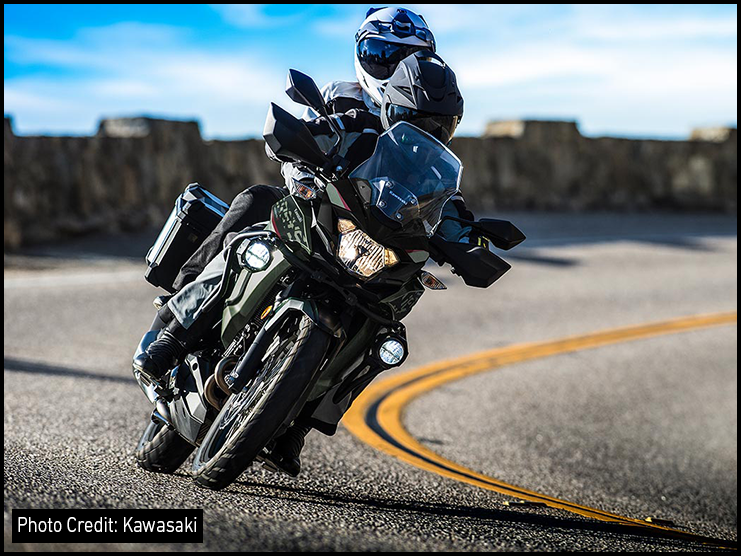
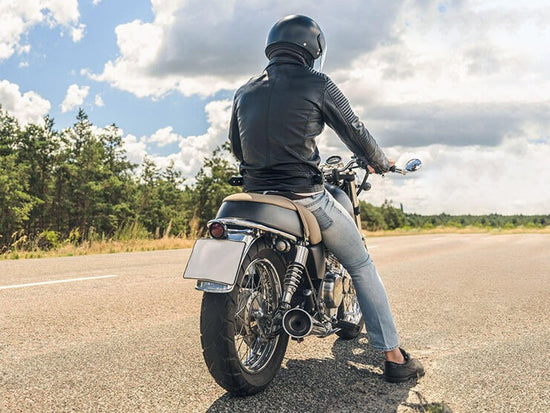
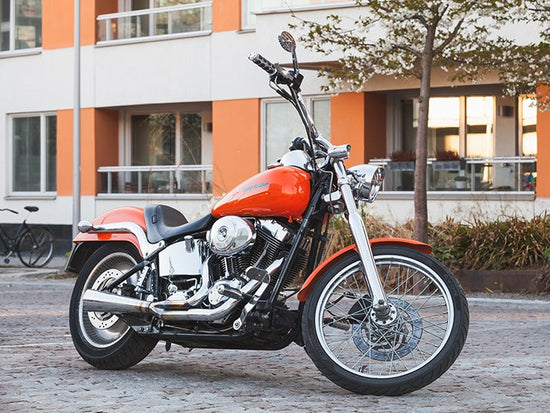

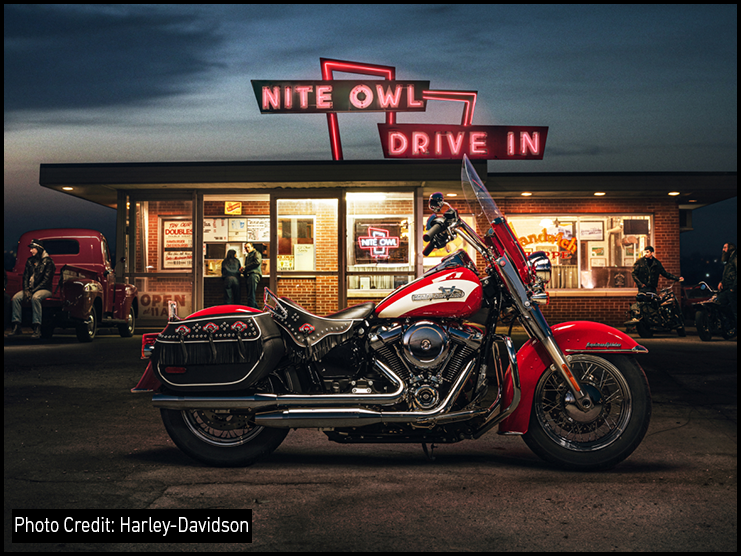
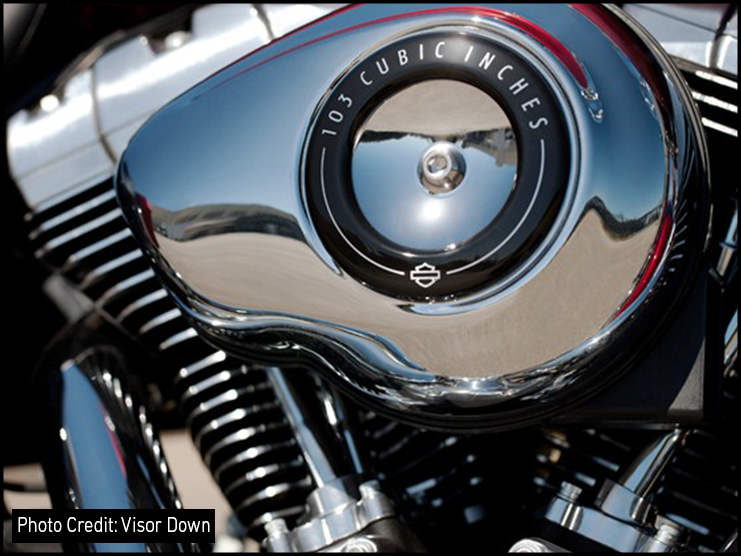
Leave a comment
All comments are moderated before being published.
This site is protected by reCAPTCHA and the Google Privacy Policy and Terms of Service apply.